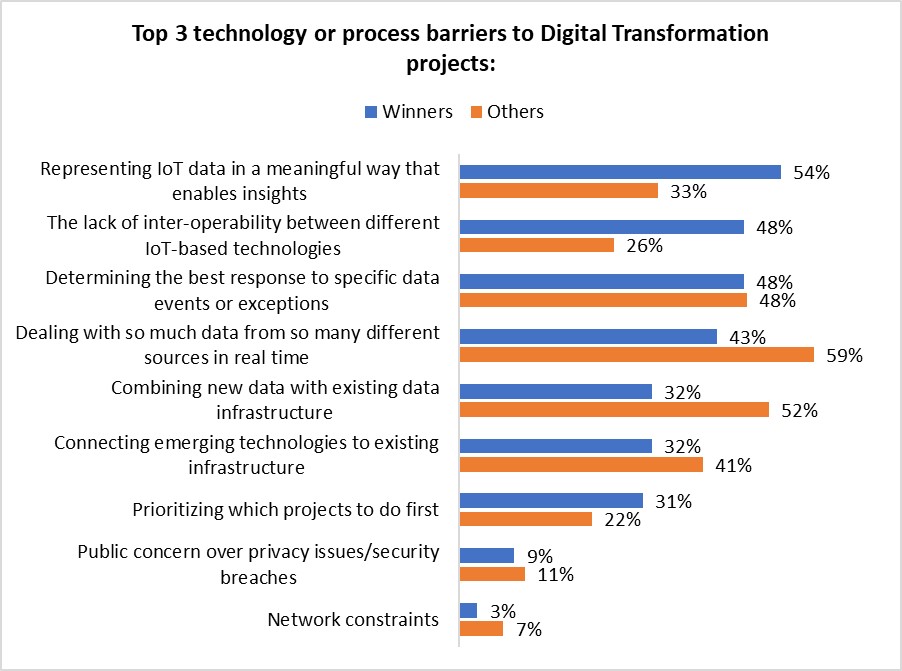What Will It Take To Merge The Physical And Digital Worlds For Retail?
When we conducted our latest research piece on Digital Transformation, our survey respondents got pretty clear – pretty quickly – about what that phrase means to them. Their three investment priorities all relate to servicing consumers in the new physical/digital hybrid selling environment (or phigital, to quote a friend.) These include 1: finding new ways to connect with consumers, 2: vastly improving how they manage their inventory, and 3: achieving confidence in that inventory accuracy in order to sell from all channels – in that order. It’s a wonderful place to start from, and throughout the full report they continually report to IoT-based technologies as the wunderkind for how they’ll get there. But while it paints a nice map for the future, there is surely trouble ahead.
When it comes to the roadblocks standing in the way, too many projects have backed up, and retailers’ IT departments are at a breaking point. Retailers do not point to the cost of adoption – in fact, less than 1 in 5 points to cost. This is unprecedented; retailers know they can afford these technologies (the rapidly diminishing price of RFID technologies, in particular, has had enormous effect here) – they just don’t have the human capital to manage all of the things they would like to take on.
The best performers, however, have a slightly different take on things. More than one-half of Retail Winners (compared to only 1/3 of non-Winners) recognize the hallmark for success is not if IoT technologies can provide more meaningful insights, but in what insights can be revealed today (Figure).
Figure: Presentation Is Everything

Source: RSR Research, July 2023
At its core, this is a story about relevance. RSR has been quite loud in its messaging about the need for relevance in much of our research in 2023, to date. From our February “What Makes An Excellent Customer Experience?” Benchmark Report:
Retail Winners know that if they can increase the number of times shoppers think of them as the favored brand to help solve whatever shopping problem they are trying to solve, then a whole world opens up – a world of net-new customer segments.
…in their eyes, if they can leverage technology to create a value proposition that is more relevant to consumers according to a number of metrics (demographic, product affinity, etc.), then promotions can be more effective than in the past. They don’t yet believe that they are able to promote highly personalized offers to consumers, but they can promote a relevant product to a more targeted segment of both new and existing customers. This is not about 1:1 marketing, for Winners, but it is about both not wasting money and being more relevant.
How does a vignette about marketing and promotions find home in a conversation about Digital Transformation? Because the tools discussed in the full report – when used properly as part of a larger, enterprise-wide endeavor – enable the types of insight about both products AND shoppers that help facilitate relevance. In the age of Amazon.com, as time progresses, that ability to offer relevance across both the physical AND digital worlds becomes increasingly more critical to success.
The full report is here.
